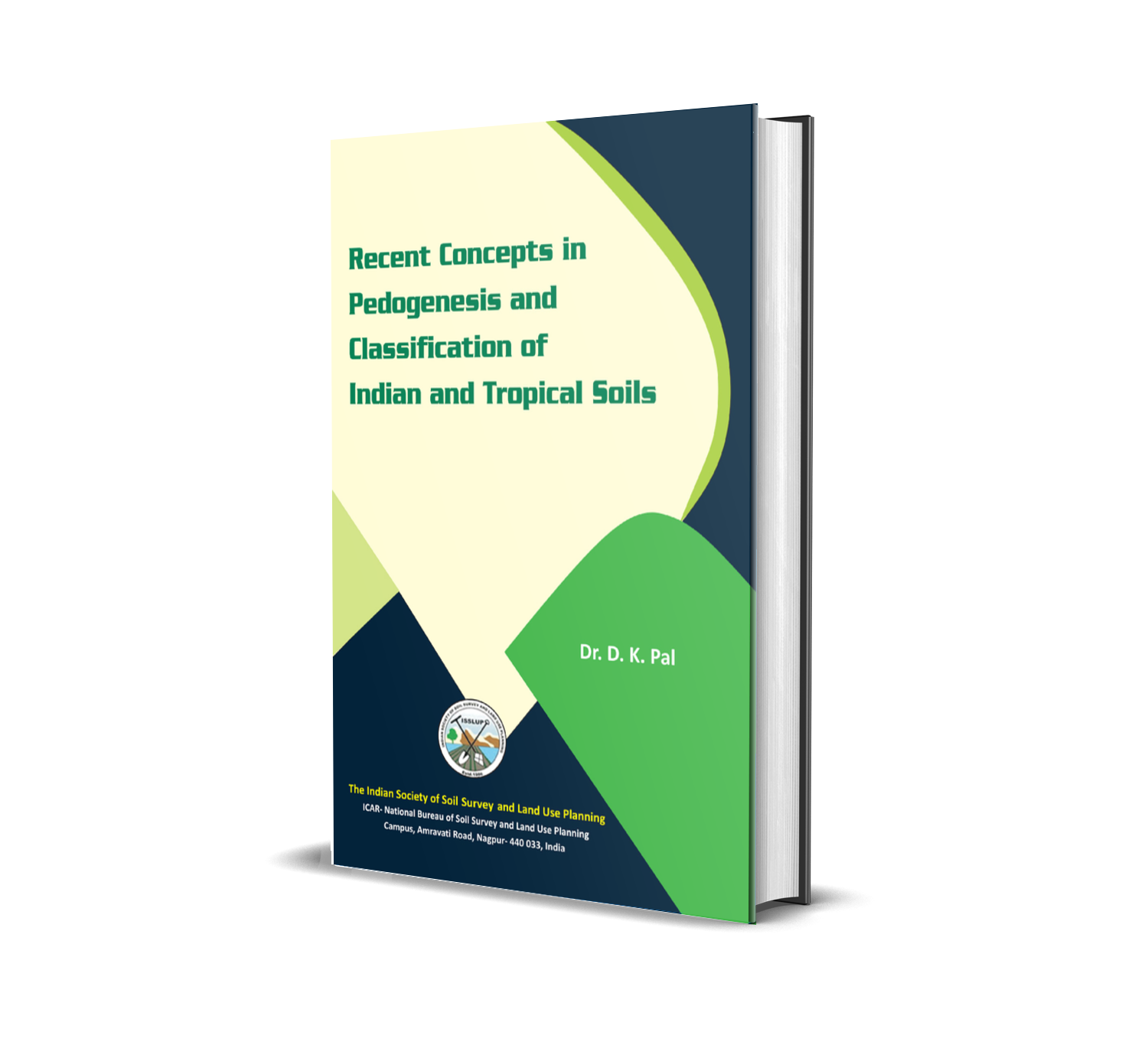 Book Name: Recent Concepts in Pedogenesis and Classification of Indian and Tropical Science
Book Name: Recent Concepts in Pedogenesis and Classification of Indian and Tropical Science Author Name : Dr. D. K. Pal
Price : Rs 500/- ( Excluding Postal Charges )
Recent concepts in pedogenesis and classification of Indian and tropical soils
What is all about this book?

Tropical soils are often thought as the soils of the hot and humid tropics only, exemplified by deep red and highly weathered soils, and are either agriculturally poor or virtually useless. Soil care through the soil survey needs to be a regular task to gain a detailed knowledge of soils, which is necessary for increasing and maintaining agricultural production to feed the population. In India, soil survey received recognition as an all-India activity following the report of the Stewart Committee in 1947, and thus the National Bureau of Soil Survey and Land Use Planning under Indian Council of Agricultural Research was established in 1976.
In 1969, the US Soil Taxonomy was adopted to classify the soils of the country. Since then, pedologists identified Vertisols, Mollisols, Alfisols, Ultisols, Aridisols, Inceptisols, and Entisols in more than one bio-climatic zones of India, and confirmed the absence of Oxisols, suggesting the soil diversity in India is large. These soils are not confined to a single production system and contribute substantially to India’s growing self-sufficiency in food production and food stocks despite the fact that managing these soils has been always difficult to sustain their productivity, and it is more so when comprehensive knowledge of their formation remained incomplete for a long time.
Basic research during the last few decades by the Indian pedologists and earth scientists has provided insights into several aspects of five pathogenetically important soil orders with special attention to their pedology, paleopedology, polygenesis, mineralogy, taxonomy, and edaphology, and created a better knowledge when the focus of soil research changed qualitatively due to the use of geomorphic history of landscapes alongside the use of high resolution mineralogical, micromorphological and age-control tools. Advanced knowledge of soil mineralogy helped to measure the relatively subtle processes related to pedology of the present and past geological periods, and its impact on rationalizing the soil taxonomic database in terms of framing the concepts of orders, suborders, great groups, and subgroups alongside suggesting various criteria for grouping soils at the family level of classification with a view to making US Soil Taxonomy more rational, understandable, and meaningful for Indian tropical soils. The present soil-genesis models although having conceptual values are not totally acceptable. For the formation and persistence of Indian tropical soils, the existing models have relevance but cannot explain the existence of million years old Vertisols, Alfisols, Mollisols, and Ultisols under humid tropical climates because these models did not consider the stability of base-rich primary minerals over geological time scale. The new knowledge provides a deductive check on the inductive reasoning so far made on the formation of tropical soils. The US Soil Taxonomy has several advantages but suffers from some drawbacks as many of the diagnostic horizons are based on inductive reasoning in conventional pedology, which needs deductive checks by studying the genesis and mineralogy of soils in greater detail. In this book, endeavors are made on how the advanced soil genesis and mineralogical information can provide deductive checks on the inductive reasonings on the formation of some diagnostic horizons and genesis of selected soil orders of Indian tropical soils. The expansion of basic and fundamental knowledge on Indian tropical soils has provided unique guiding principles to develop several index soil properties as simple diagnostic methods to study the pedology and edaphology of Indian and tropical soils, which may be adopted by both graduate students and young soil researchers for expeditious development of national soil information system to enhance crop productivity and maintain soil health in the 21 st century.
